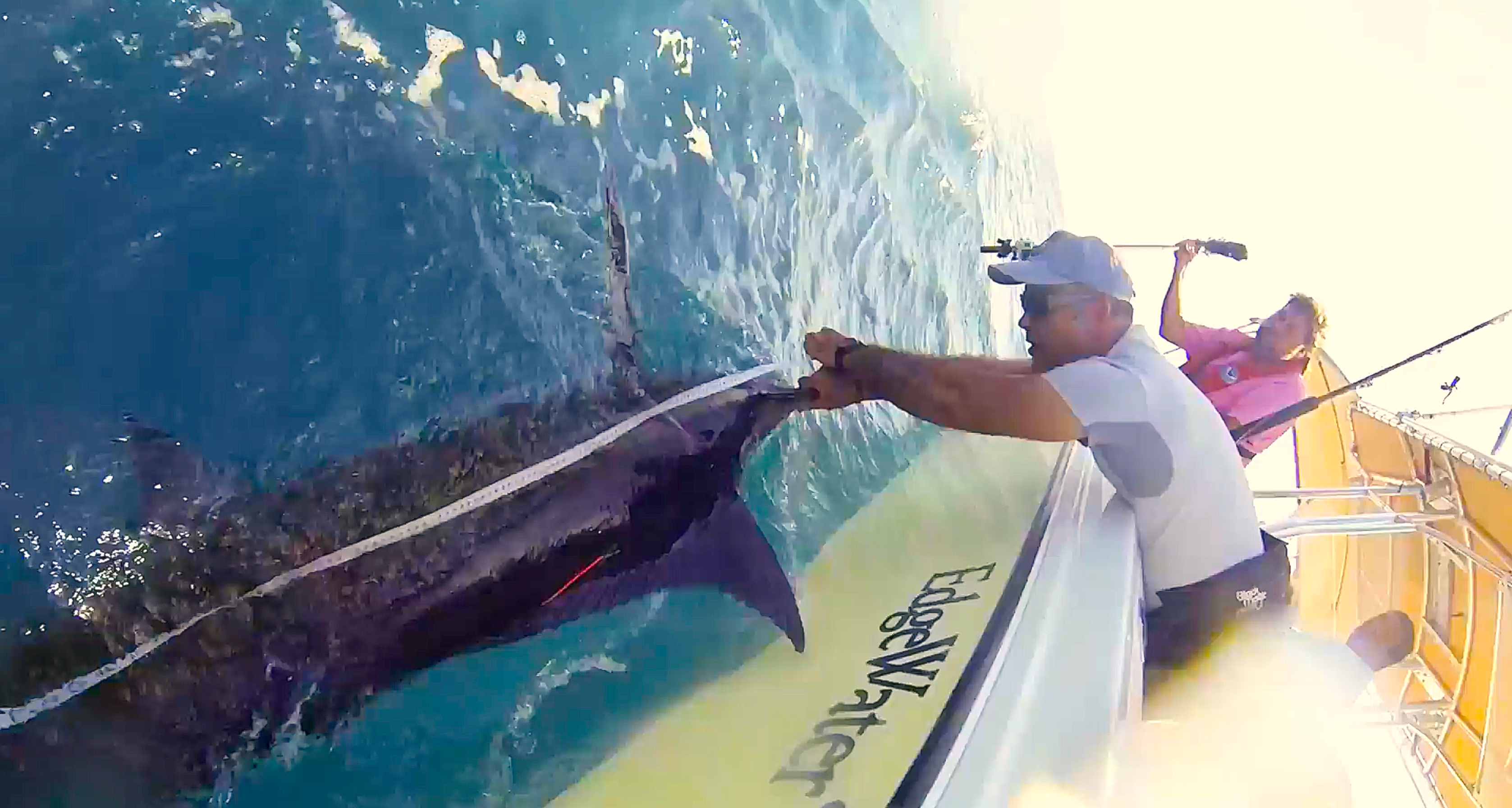Where Can Anglers Find Blue Marlin?

A new study reveals the depths and temperatures that blue marlin prefer.
From April through August each year, North Carolina anglers fishing in offshore tournaments like the NC Billfish Series lower the riggers and throw out the baits in search of species like blue marlin.
So how can scientists help? By revealing where blue marlin spend their time.
Research Need
The blue marlin is a prized, large species — and many deep-sea saltwater anglers consider it the ultimate catch. It doesn’t live close to the bottom or near the shore, but out in the open waters of the Atlantic, Pacific, and Indian Oceans. A member of the family Istiophoridae (the same fisheries family that includes several other billfishes), the blue marlin is highly migratory.
NOAA Fisheries manages blue marlin and fisheries of other highly migratory species (e.g., tunas, sharks, swordfish, and other billfish) in the U.S. Atlantic Ocean, the Gulf of Mexico, and Caribbean waters. The latest population assessments indicate that the Atlantic stock of blue marlin is overfished. Consequently, catch and release is the most common method that anglers use to interact with blue marlin in the United States.
While traditional and satellite tagging studies have shown that blue marlin can travel long distances relatively quickly, more detailed information is necessary to understand the behavior of this species and to craft effective management.
And while this information is of obvious interest to fishery scientists, I expect that aspiring blue marlin anglers might be interested in the findings as well.
What did they study?
Working in cooperation with experienced billfish anglers, scientists captured and tagged three blue marlin off Madeira, Portugal, in the northeast Atlantic. The fish ranged from 500 to 705 pounds.
Satellite tags recorded temperature, depth, and light every 60 seconds and then transmitted data by satellite once the tag popped off the animal and floated to the surface.
What did they find?
The study tracked three blue marlin for 24, 76, and 83 days. The fish at large for 83 days travelled a straight-line distance of 1,273 miles, averaging over 15 miles per day. The researchers followed blue marlin from Portugal to the Canary Islands and Cape Verde, close to the African and European Atlantic Ocean continental shelves.
The fish spent roughly 70% of the time at depths less than 17 feet and most of the time in waters between 68.0˚F and 78.8˚F.
Each of the fish made regular and quick dives to waters deeper than 700 feet.
What else did they find?
Similar to wahoo that we profiled here earlier, blue marlin are not “warm blooded” and do not have the capacity to conserve metabolic heat. This is likely the reason why blue marlin only spent brief periods of time in deeper, cooler waters.
Further, blue marlin performed most of their deep dives during daylight hours. The researchers speculate that blue marlin are using the ambient light available during the day to assist in locating prey at depth.
Anything else?
Satellite tags collect enormous amount of data and typically only transmit summaries of the data once they pop off. One tag that popped off in 2012 as planned was physically recovered 8 years later off the Bahamas in 2021. With the tag in hand, scientists could analyze all the data collected, most at 1-minute intervals, which offered a rare glimpse of that blue marlin’s life over an 83-day period.
Reading
Carla Freitas, Mafalda Freitas, Samantha Andrzejaczek, Jonathan J. Dale, Wayne Whippen, and Barbara A. Block. 2022. First insights into the movements and vertical habitat use of blue marlin (Makaira nigricans) in the eastern North Atlantic. Animal Biotelemetry (2022) 10:12. DOI https://doi.org/10.1186/s40317-022-00284-0
Summary compiled by Scott Baker
Lead photo: NOAA scientists tag and measure a blue marlin.
The text from Hook, Line & Science is available to reprint and republish, but only in its entirety and with this attribution: Hook, Line & Science, courtesy of Scott Baker and Sara Mirabilio, North Carolina Sea Grant. HookLineScience.com
- Categories:



